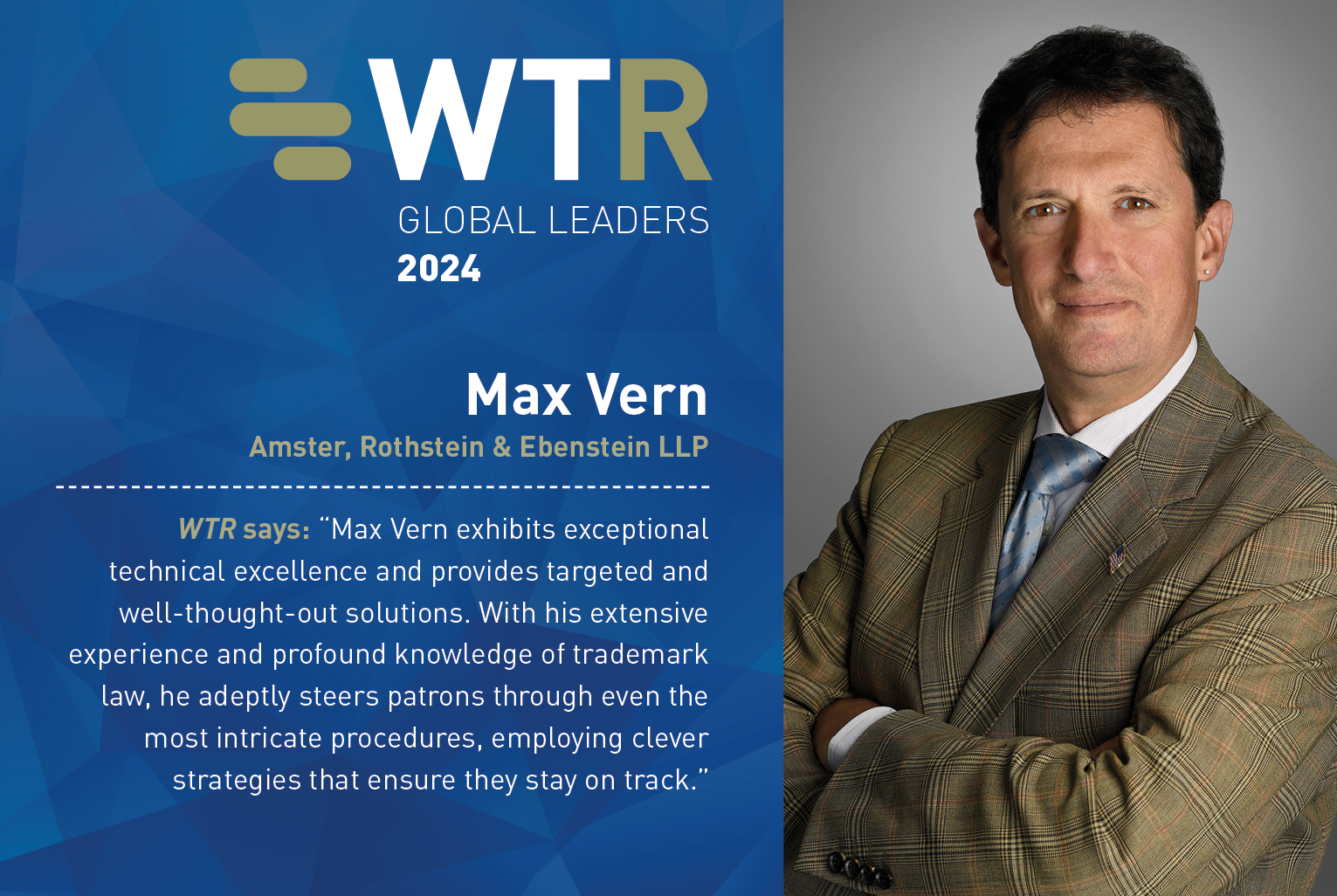Max Vern
How do you help clients navigate issues around scams and online fraud that use their trademarks or target their brands?
One unfortunate side effect of growing trademark importance is the significant increase in scams and frauds committed by unscrupulous actors that try to cash in on trademark owners’ rights. The key is strategy and diligence, regardless of whether we are dealing with spoofers trying to lure trademark owners to ‘file’ or ‘renew’ brands through them, more sinister hijackers trying to fraudulently get marks assigned to them to get a foothold in the marketplace or outright copycats flooding the market with counterfeits.
We generally recommend that brand owners register their trademarks, put status alerts and watch services in place, engage online brand protection services, proactively police their rights and cooperate with authorities – from the USPTO to the US Customs and Border Protection (which has helpful programs that can sometimes be overlooked). Brand owners should be assertive in implementing such measures, since scams are a constant threat to intangible assets.
If you could change anything about prosecuting trademarks before the USPTO, what would it be and how likely is it to happen?
The US trademark registration system is built around the use requirement, and it is unlikely that this deep-rooted regime will change. However, foreign trademark owners could partially circumvent this requirement and should be aware of their options and the differences between prosecuting US filings based on foreign registration and the Madrid Protocol track.
Looking at prosecution in general, trademark owners and their counsel would love to see more expeditious processing and handling by the USPTO of examination and registration, enhanced cooperation between the USPTO’s different trademark division units and a more user-friendly online database with enhanced e-filing tools. We can see the light at the end of the tunnel when it comes to the latter of the three.
How do you anticipate client concerns might evolve over the next 12 months, and what steps is your firm taking to prepare for this?
Being a prophet is never gratifying, but no crystal ball is needed for anticipating client concerns. Whether dealing with issues such as the introduction of innovations (ie, generative AI) or forecasting clients’ needs in their industries, the key is knowing clients well and understanding their business models, being proactive and going the extra mile. We believe that our firm’s business model – being fully digital, paperless and at the edge of technology, working virtually from any time zone and being accessible to international clients at all times despite having offices in the city that never sleeps – makes us nimble and well prepared to accommodate our clients’ ever-changing needs.
You have won praise for your expertise in the protection of global trademark portfolios. What is the key to success in this area, and how do you alter your strategy depending on the type of client and jurisdiction that you are dealing with?
Trademark rights are territorial. In a global economy that knows no borders, it is critical to start devising a protection strategy at the beginning of the brand building process. There is always a balance between budgetary targets and strategic growth needs, but protecting intangible assets is the primary factor for successfully building a brand. Always think outside of the box and two steps ahead – where does your client want its brand to be tomorrow, and the day after?
It is crucial to understand individual versus regional versus global marketplace realities and assess a brand’s expansion potential. The adage that “an ounce of prevention is worth a pound of cure” is as relevant as ever.
You recently published an article on the US Supreme Court’s precedent-setting Jack Daniel’s case. How do you expect this case to impact brand owners’ practice?
The Supreme Court’s unanimous decision certainly sent a clear pro-brand-owners message, supporting key principles of trademark protection and enforcement. While the court did not decide on the question of trademark confusion, the central takeaway is that, in an infringement case, the First Amendment does not shield a party from liability or let it hide behind the parody and fair-use defences. Many brand-owning giants (eg, Nike) filed amicus briefs in support of the whiskey company’s position before the court, and the verdict is an unequivocal victory for brand owners. It sends the right signal of the system’s unwavering stance against anarchy of brand misuse and usurpation. And, because markets hate uncertainty, this decision supports the free market economy as the basic postulate of our society.
Max Vern
Partner
[email protected]
Max Vern is a partner and head of the international department at Amster Rothstein & Ebenstein. He has more than 25 years of experience working with brand owners worldwide to secure and enforce their intellectual property. He focuses on trademark rights and protecting global trademark portfolios, including domestic and international protection strategies, management and monetisation. Mr Vern’s background, extensive international experience and multilingual capabilities facilitate communication and a thorough understanding of IP owners’ needs.
